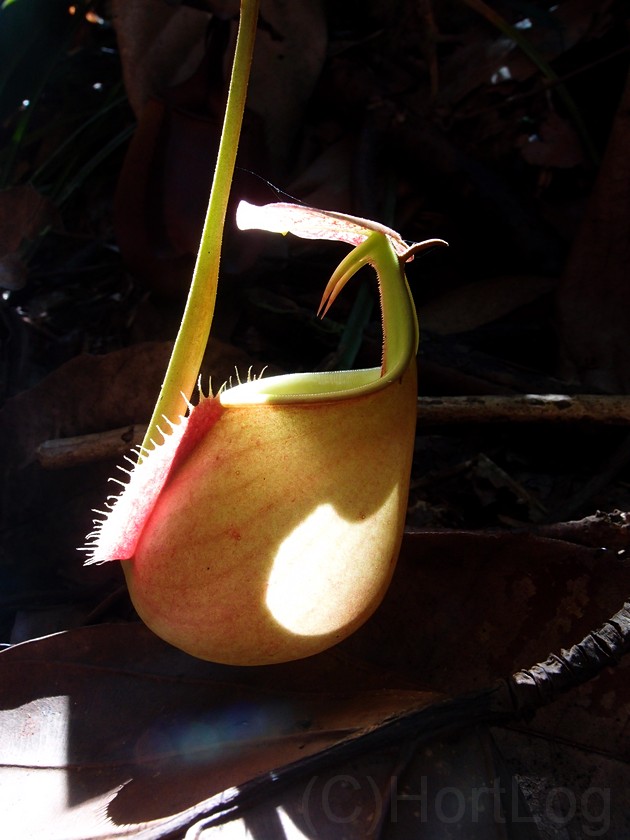The nutrients-poor soil of the kerangas and peat swamp forest have driven many plants to supplement their autotrophic existence by other nutritional means. Borneo has an astonishing variety of such plants - as I discovered during a day trip at a kerangas bordering a peat swamp forest .
Under the full glare of the sun and on persistantly wet sandy area, the sundew Drosera burmanii coexist with a population of bladderwoth Utricularia - which would almost be unnoticeable were it not for the yellow bloom.
The tentatcles of the Drosera burmanii are tactile and produce both a sweet fluid and a sticky glue - these attracts insects from which they then surround and entrap. The speed of movement of the tentalces in this species is one of the fastest in the genus - closing in on the prey between 5-10 seconds.
The dimunitive nature of these plants mean that they easily be outcompete by larger, faster growing plants in richer soils so they are restricted in bright, acidic and nutrient-poor area
The pitcher plant genus Nepenthes has the most diversity in Borneo and Philippines. Unlike the previous species, Nepenthes do not have movable parts to ensnare their prey. One of the largest lowland species Nepenthes rafflesiana shown below- demonstrate its usual modus operandi - trapping, drowning and assimilating invertebrates in its large pitchers. Note the large lid sheltering the pitcher in this photo - it serves to prevent dilution of the digestive enzymes from rain water.
This species was actually first discovered in Singapore by Dr William Jack in 1819.

Nepenthes ampullaria, on the other hand, has a tiny lid, which flips away from from the pitcher opening. This species does not catch much insects - instead it relies on leaf debris and other organic waste dropping into the pitchers and so it clearly wants the lid out of the way. Its pitchers also do not have slippery inner wall and very little nectar gland which produce insect attractants....
....the plant branches repeatedly to form a network of pitchers on the floor. This maximise the capture rate of any fallen organic matter.The red-pitcher form is very attractive and has great horticulture value. It seems to be restricted to Borneo
The red speckled form is common throughout its range.
The Borneo endemic Nepenthes bicalcarata has a pair of downward facing fangs growing from the the pitcher peristome. The function of this is still a matter of debate. Although it feeds on the carpenter ants that nests in its tendrils, it also benefits from a symbiotic way since the ants are shown to provide housekeeping service by removing excess undigested organic material, thereby preventing bacterial / fungal proliferation and early demise of the pitchers.


The pitchers are medium size and the red variety is quite horticultural.
While most Nepenthes are indiscriminate when it comes to food, Nepenthes albomarginata is rather picky - specialising in trapping termites. This species has a ring of pale hairy cells around the rim of the pitchers which somehow termites cannot resist feeding. The inevitable eventually happens and the pitcher will soon be filled with termites after sacrificing some strands of hairs.
There are 2 forms - the lowland green form .....
and the attractive dark form from higher elevation.
Nepenthes mirabilis is one of the most widely distributed species and the normal form has rather unremarkable attributes although the variety echinostoma, which I could not find, has surreal and weird peristome. In my previous post I had found pitchers filled with ants.
The pictures below look very much like the lower pitchers of N. rafflesiana but I think it is the hybrid with N. ampullaria known as Nepenthes xhookeriana
This is another hybrid, I believe Nepenthes rafflesiana x mirabilis and it appears that one of the parent is very red. Natural hybrid is very common amongst Nepenthes particularly in high diversity area like Borneo where the different species co-exist in the same area.






















